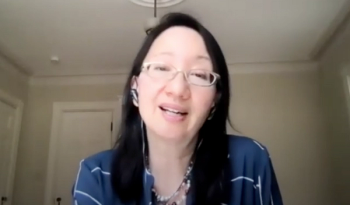
A Concept for Every Company to Consider, Not Necessarily Deploy
Health reimbursement arrangements are the hot new idea in employee benefits. Put them through this third degree before you get burned.
A Concept for Every Company to Consider, Not Necessarily Deploy
By Jim Dolstad
Health reimbursement arrangements are the hot new idea in employee benefits. Put them through this third degree before you get burned.
Company health plan reviews have never been a simple process. The due diligence of gauging the feasibility of existing plans, forecasting the potential of new ones and crafting requests for proposals is an annual rite of passage for the HR world.
The upcoming round of reviews will be made that much more complex by a government decision this past June, which allowed account balances of health reimbursement arrangements (HRAs) to roll over year after year. This has fostered widespread interest in consumer-driven health plans and piqued curiosity among corporate executives who are battered by rising health costs amid the continuing recession. Rarely has there been so much interest and discussion around something this untested. There has been a loud, droning buzz around HRAs, which essentially are individual accounts funded solely by employer contributions that pair "catastrophic plan" designs with high deductibles and high out-of-pocket limits.
Truth be told, the June IRS ruling that validated HRAs may not change the final look of health care options offered by many companies. It seems, however, that it will almost definitely impact the annual plan design and budgeting process. The widening discussion in newspapers and business magazines is forcing employers to at least consider their appropriateness for the coming plan year. As a result, finance and HR staff members on benefits review committees are wise to select experienced health care actuaries and consultants to help them wade through these new waters. They'll also want their legal colleagues to ensure that new plan designs and pricing strategies are in compliance with regulation. Legal support is critical, because the Treasury Department has carefully defined several governing rules, but purposely allowed the benefits community leeway to establish best practices.
Following are some key considerations that can help health care benefits decision-makers organize thinking and reach rational conclusions on whether plans that boast advantages like "consumerism" and "value-driven" will or won't help control health care costs, or be perceived positively by employees.
Metrics on current enrollment and utilization
To date, there are no statistical measures that prove or disprove an HRA plan's effectiveness, but there are several indicators that can help review teams gauge the potential for success. For example, the percentage of employees currently participating in Flexible Spending Accounts (FSAs) can provide some good insights into the organization's willingness to participate in an HRA. Participation in health care FSAs averages about 20 percent across employers, but varies widely from under 5 percent to over 40 percent. Employees who readily participate in FSAs are more likely to adapt to HRAs.
A wealth of information is also available in the medical plan elections made by individual employees, and an in-depth analysis could establish relative differences in risk pools among plans. Companies can also draw conclusions based on demographics, covered members per employee, managed care penetration rates, expected and maximum out-of-pocket expense per employee and potential savings through selection of the most efficient health plan.
Companies should also review utilization data, including network utilization; distribution of claims by dollar ranges; inpatient bed days per thousand members; and physician visits per thousand members. Benchmarking utilization statistics against managed care and non-managed care norms will suggest how efficiently each current plan is operating. Employers who have a significant amount of their population in efficiently managed plans could lose those savings if they elect to offer an HRA plan that will manage care less efficiently. Conversely, employers who are not currently realizing the benefits of efficiently managed plans have little to lose and may stand to gain from the consumer dynamics inherent in an HRA plan.
The company's overarching benefits philosophy
Historically, most employers take one of two approaches to health care: They are leaders, sometimes on the "bleeding edge," or followers who choose to "wait and see." Forget historic philosophies; the name of the game has become survival. Continual cost pressures are forcing some hidebound conservative companies to consider sweeping reforms and relatively untested concepts like HRAs, while aggressive innovators are unwilling to trade hard-earned savings for HRA unknowns. In many cases, however, the risks of doing nothing far outweigh the terrors of the unknown. A successful implementation of HRAs may be very beneficial to an employer, but a poor implementation may prove costlier than the status quo.
The most significant risks and costs associated with HRAs at this time are:
- Comprehensive and costly communications campaigns that educate employees on the change in benefits philosophy and education on HRAs. Successful communication around these plans is more likely to resemble ad campaigns rather than open enrollment communications.
- The financial uncertainty of what these plans will cost in 2004 and beyond. The full impact of consumerism has yet to be determined, the demographics and health status of enrollees are not known, and annual trend assumptions are more nebulous than usual.
- The financial uncertainties of the HRA account itself and the impact of the rollover feature on future employer funding.
- The fluid plan design. Best practices for HRAs are evolving rapidly and the bright ideas of early spring could be passé by summer. Because of this rapid evolution, companies will likely need to modify plan designs on an annual basis.
Networks and breadth of products offered
How strongly can you rely on health care networks and medical management in the areas you operate in? Just as with other plans, potential cost savings remain the clear driver behind the growing interest in HRAs. While the economies of consumerism are intriguing, it's very important to remember that one percent of an employer's population will generate 29 percent of the claim dollars; 16 percent of the population will generate 56 percent of the dollars; and the remaining 83 percent will generate only 15 percent.
Consumerism notwithstanding, the ultimate financial success of the HRA depends on managing the 85 percent of the cost associated with only 17 percent of the population. This 17 percent includes those with catastrophic claims, chronic conditions and serious acute illnesses. While consumerism will likely result in some cost savings for these types of claims, the large majority of the savings will be derived from provider contracting and medical management.
Significant differences exist in the levels of provider reimbursements among various plans, and those differences vary dramatically by region. A great amount of detailed cost data is required to properly evaluate the cost relativities among HRA plans, as well as between the networks used in the HRAs and the current plans. At a minimum, the data requested should include average costs for such key billing areas as CPT-4s (current procedural terminologies), ASCs (ambulatory surgical care), DRGs (diagnostic related groupings), per diems and RBRVS (resources based relative value schedules for Medicare). Multisite employers will want these cost breakdowns for all of their major locations.
In addition to the provider reimbursement data, quantitative and qualitative data needs to be collected on each plan's medical/disease management programs. The benefits team and its consultants can blend this raw cost and medical management data to develop reasonable cost estimates for each plan. They can then compare those estimates with the actual costs of current plans, knowing that significant deviations from the status quo can lead to some commonsense conclusions about the plausibility of HRAs for their organization.
Retiree health care strategy
Employers who offer retiree benefits are constantly looking for ways to reduce their FAS 106 expense and provide benefits at a reasonable cost to their early retirees. Most have been losing this battle over the past few years. The introduction of HRAs into retiree benefits will not solve the problem, but will definitely provide some relief.
Since unused money in HRAs can be put towards post-retirement health claims or premiums, an HRA can make for an attractive option for companies that are committed to former employees who haven't reached Medicare or Medicaid eligibility. Most early retirees appreciate the peace of mind in knowing that they will be able to curb soaring health care costs at a slightly better rate. In this way, HRAs can make for win-win situations. Employers can offset their FASB 106 liabilities, while new retirees enjoy slightly more affordable coverage until their arrangements have dried up or until they are eligible for Medicare.
New data on HRAs emerge every month, but there is no definitive answer as to whether or not HRAs will save money. At this point, every vendor has a story that meets its own needs. Companies whose only line of business is HRAs talk about the amazing impact of consumerism on the initial cuts of data. Traditional carriers that have not developed HRAs speak of a passing fad, and those carriers that offer both traditional and HRA plans play it straight down the middle. Unlike traditional plans, HRAs are multiyear arrangements. Even though a small amount of data is beginning to emerge as to the success or failure of HRAs, clear answers will not be determined this year or next. And like HMOs and other delivery mechanisms, the effectiveness of HRAs will vary dramatically by company.
As HRAs expand the playing field for health care benefits planning, review teams will need to base decisions on increased research and more in-depth forecasting of what's needed by their unique organization. These teams also need to work closer with their health care consultants and legal professionals. Only when these steps have been completed should a benefits review team make a strong recommendation about the appropriateness of HRAs.
Planning should begin early as benefits professionals will not only have to find new answers, but also think through new questions. The silver lining could be lustrous though. Time spent checking into these new options will seem very worthwhile if HRAs produce significant savings that drop to the bottom line. And even in cases where HRAs are proven not to be good fits, benefits managers who do the up-front research will have the assurance that they've made the best decision for their organization and its employees.
Resource Links:
Jim Dolstad. A Concept for Every Company to Consider, Not Necessarily Deploy.
Business and Health
Jun. 1, 2003;21.
Newsletter
Get the latest industry news, event updates, and more from Managed healthcare Executive.





















































